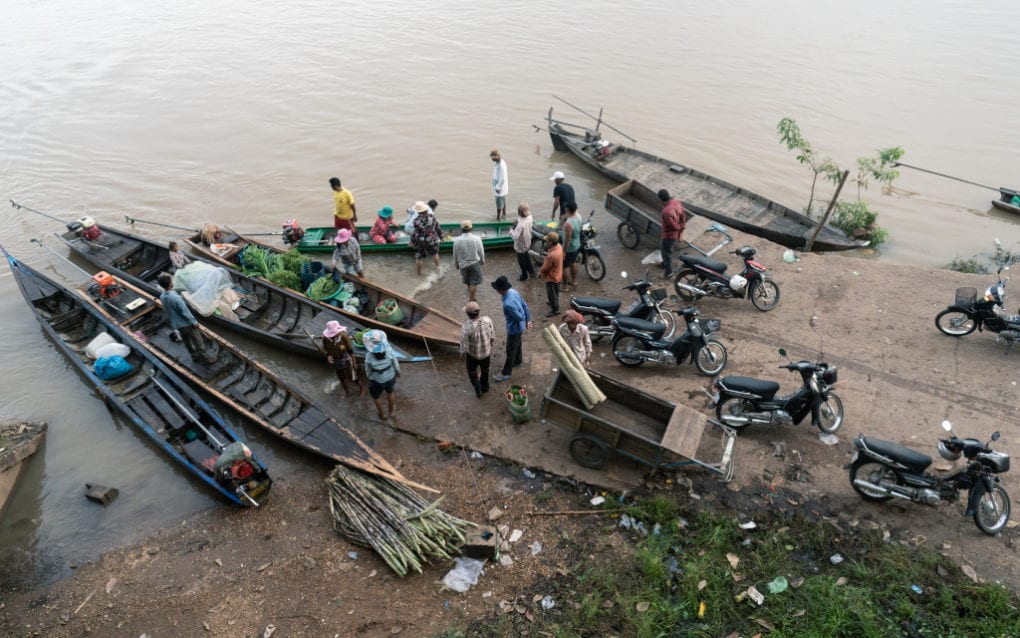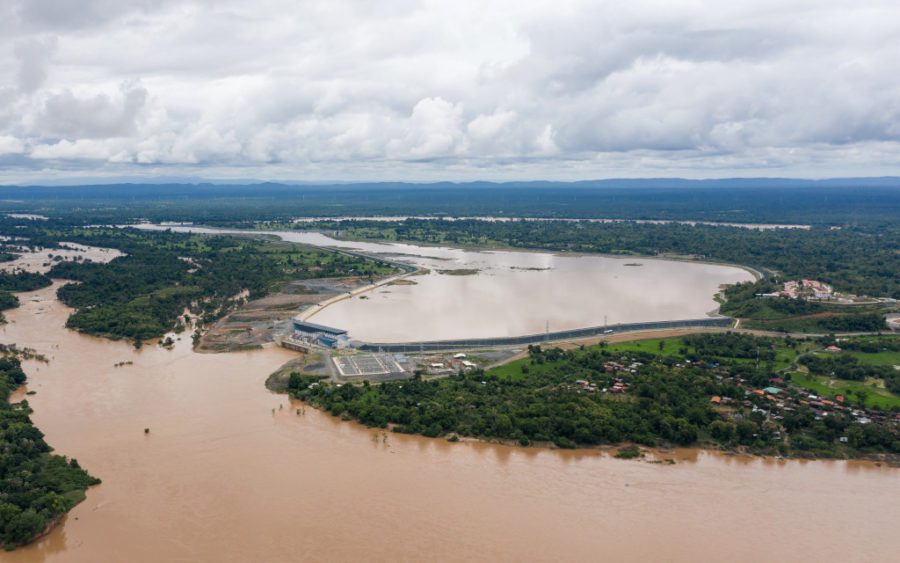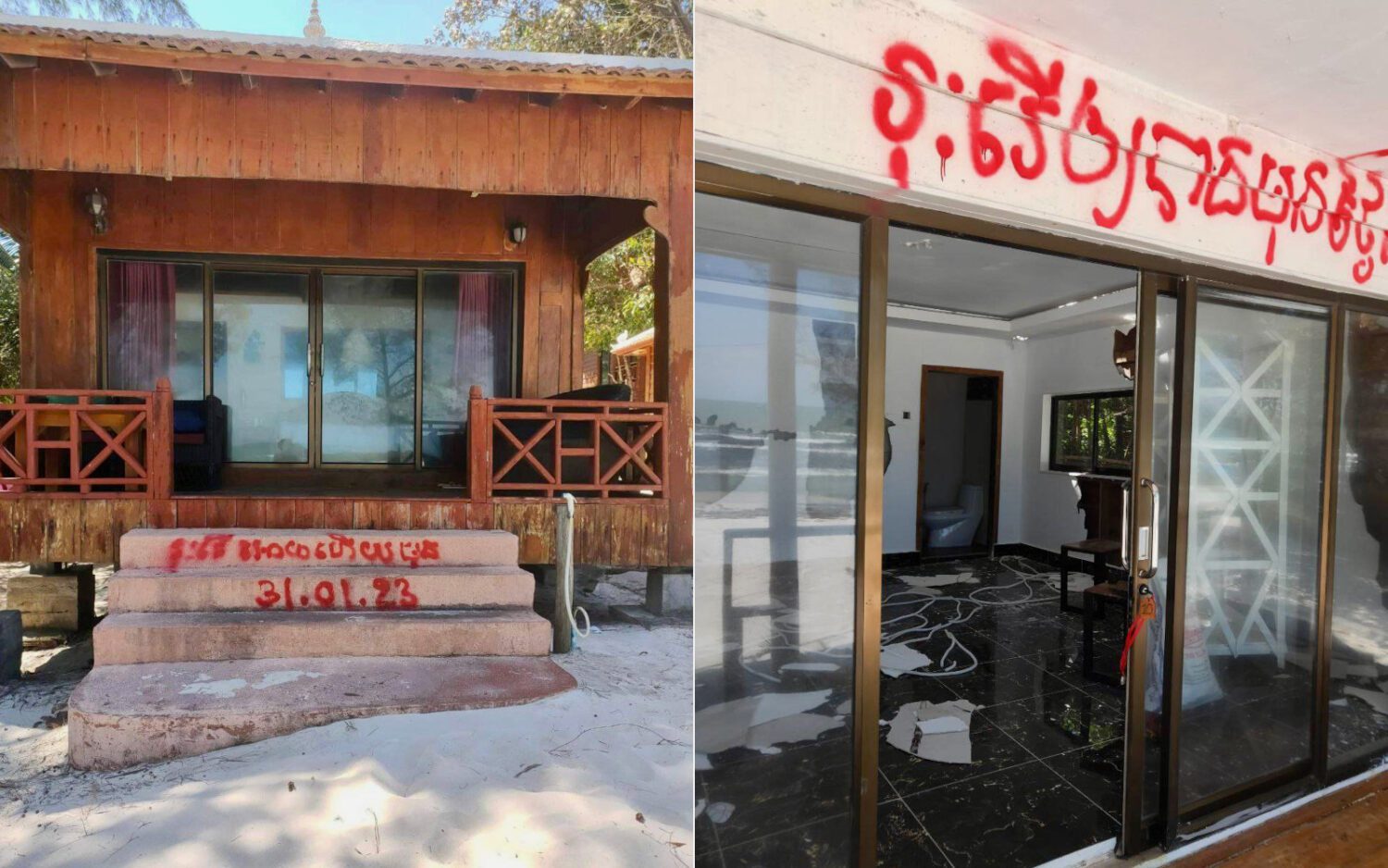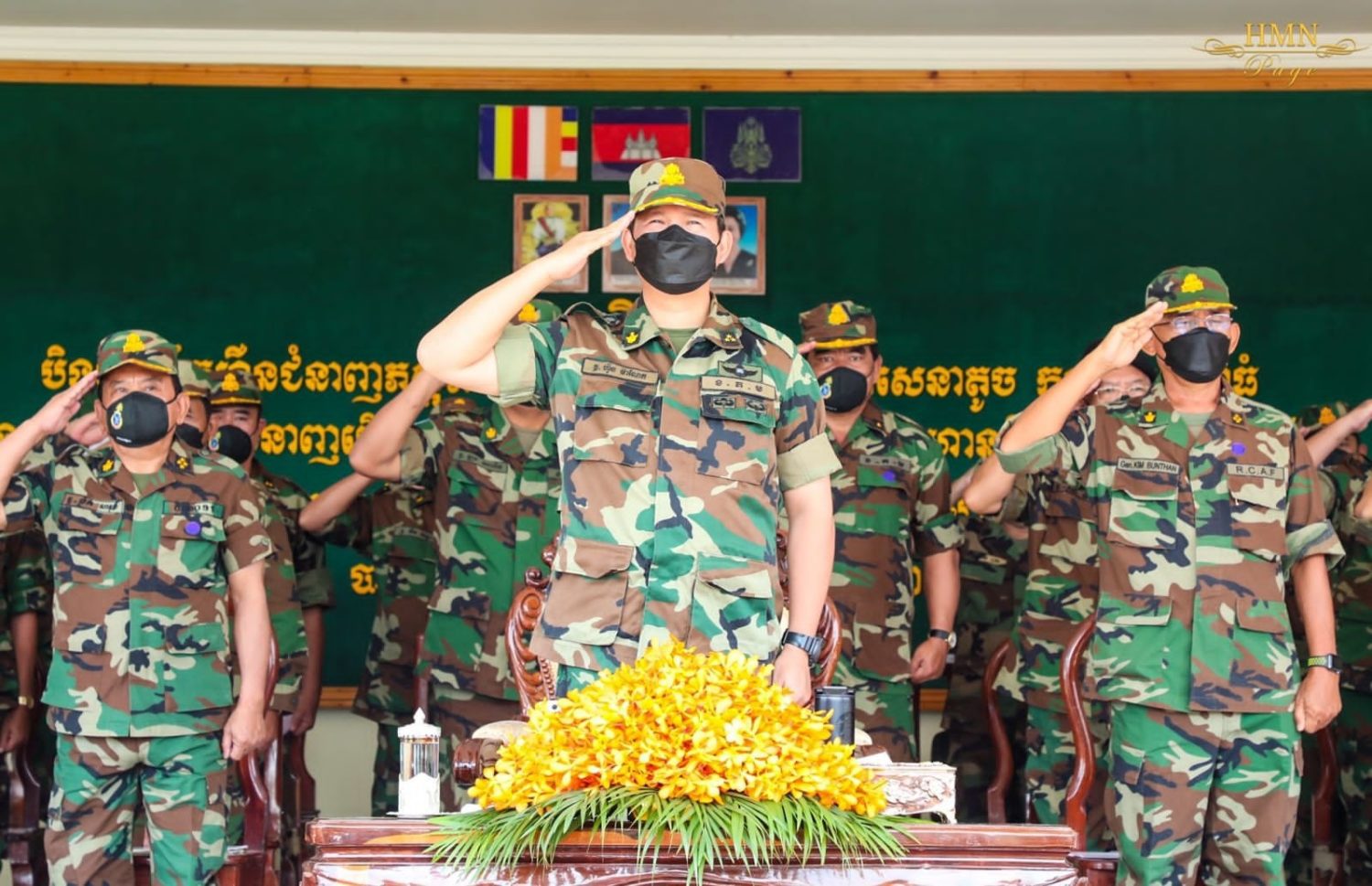The Mekong river endured three years of drought and its lowest-ever water levels due to minimal rainfall as well as the actions of upstream hydropower dams, which had spillover effects for the Tonle Sap lake and Cambodia’s fishing industry that relies on it, according to a new report.
The Mekong River Commission reported that water flows down the mainstream were lower than average for three years it studied — 2019, 2020 and 2021 — with the worst impact of drought and low water flows hitting downstream countries.
The wet season, when river volumes are at their deepest, was also reduced to four months as they started in July — one month later than usual — for the last three years, the report says.
The Tonle Sap lake, whose unique flood-pulse system depends on the Mekong, also saw the lowest water levels on record during the last three years. Abnormally low water levels were likely the primary cause of fish shortages, which have become a constant bane for Tonle Sap fishers.
Two previous reports — one by the U.S.-based think-tank Eyes on Earth in April 2020, and a follow-up by Tsinghua University and the China Institute of Water Resources and Hydropower Research in July 2020 — studied the droughts on the Mekong and its causes, and sparked debate on how much hydropower contributed to the low water flows.
The MRC’s report points to both hydropower reservoir storage and low rainfall as having an impact on the river, and argued the rainfall was the cause of the upstream hydropower operators’ decisions to store more water.
Khim Leng, the chief of Sampan Leu village, on the Mekong river in Kandal’s Sa’ang district, said the village’s canals are filled with more soil and sand than water these days. Farmers need to dig their wells at least 50 meters to reach water, and he has noticed the fish catch drop to 50 percent of what it was before 2019.
“People cannot do business on their own because until they have [invested in] a lot of equipment, so they cannot earn much,” he said.
On his vegetable farm in Kratie’s Sambor district, Vorn Tray said he lives directly on the Mekong and doesn’t have much problems with watering his crops, but his neighbors who live a little farther from the river can’t water their fields with wells alone.
“Using a few wells, it’s not enough to fill the needs of 30 or 40 families,” he said. He hoped that the government would “look at [the needs of] the farmers in the countryside or those living along the Mekong river” before encouraging investors to build more hydropower dams.
The MRC compared water levels and flow rates on the Mekong river and Tonle Sap system to those recorded between 2008 and 2017, showing the past three years had more extreme droughts and lower water levels. The Tonle Sap’s total reverse flow, which usually swells the lake in the wet season to five times its dry-season size, was 58 percent lower in 2020 than its previous average, and 51 percent lower than average last year.
It notes that rainfall was lower than average in different parts of the Mekong during the 2019 wet season, followed by the smallest rainfall on record in 2020, and a delayed monsoon season again last year.
Hydropower operators therefore released less water from hydropower reservoirs in 2020 after facing droughts and low reservoir levels the year before, the report says.
Wet season river flow levels recorded in Stung Treng province appear to reflect this trend: The volume of the river’s flow was 90.8 cubic kilometers below average flows in 2019, dropping further to 99.63 cubic kilometers below average in 2020 before returning somewhat to 68.46 cubic kilometers lower than average last year.

While the MRC report acknowledges and seeks to provide more information to the debate over the role of hydropower and climatic conditions in the Mekong River’s levels, the “more pertinent and important issue,” the commission says, is how Mekong countries could communicate and cooperate during times of drought, suggesting methods to ensure water security and notify countries of drought threats.
The MRC suggested that upstream hydropower operators on the upstream Mekong, mostly in China and Laos, could potentially respond to low flows by timing when they release water from their reservoirs. Releasing water in June would help compensate for the late start to the monsoon, but this would be risky for operators because they need water reserved to run power in the dry season, so instead the commission recommended releasing water in August to compensate for low reverse flow volumes.
So Sophort, the secretary general for the Cambodia National Mekong Committee, said he expected low rainfalls and low flows in the Mekong to persist.
“This trend might further continue in the future as we are living in a changing climate,” he said.
He said Cambodia would continue to work with the other countries along the Mekong to adapt and respond to these conditions, without going into detail about what approaches they would take, but also emphasized the importance of China in responding to droughts.
“The supplementary water release during the critical situation of drought in the Mekong like what had been done by China in the recent year was a good gesture of helping each other to cope with drought and Mekong low flow and this should be continued,” Sophort said.
In a response to questions, the MRC Secretariat, or the agency that operates the regional commission, said creating reliable flood and drought monitoring systems with a more accurate early warning system was a “must” and the MRC was “in the best position to do this for the interest of the basin’s people.”
Observers have noted that China has not shared year-round data, only reporting flood season data. But the MRC Secretariat said that China last year started providing year-round data from two hydrological stations on the upper Mekong, Jinghong and Man An, and has notified the MRC of major changes in water released.
“More frequent extreme events of flood and drought are most likely to hit the LMB in the future due to climate change. Hence, faster and well-prepared responses/measures should be seriously and carefully considered from now on.”
In a separate MRC announcement, Cambodian national An Pich Hatda ended his term as the commission’s first CEO from Mekong region countries, and he was succeeded by Laotian national Anoulak Kittikhoun, who previously worked for the MRC and U.N.
The fishers and farmers who rely on the river say they’ve been watching the Mekong river shift before their eyes in recent years, and the changes in turn have made their lives more difficult.
Kong Chanthy, head of the community network in Stung Treng’s O’Svay district, said the Mekong had hit its lowest point in the last three years, and he had noticed an increase in landslides that seem to come from the unstable water.
“The last three years have made the water flow lower than every year, making the water of the Mekong river in some areas so that it does not even flow into the streams,” he said.
The water flow also affects the amount of rich sediment deposited along the banks, which is crucial to farmers, and fish catch is also dependent on water levels, as fish need deeper pools to breed. He urged the Mekong River Commission to take the information from its reports and raise the alarm to the government officials who decide to allow companies to construct hydropower dams.
“I urge the Mekong River Commission to urge the Laotian government and the countries that are building hydropower to stop building hydropower in the upper reaches [of the Mekong],” he said. “We see the construction of hydropower helps to develop a country, but it only benefits one country or one company, so what about the millions of people who depend on the Mekong river system, how do you solve it?”
Updated on January 19 with comments from the Mekong River Commission.












